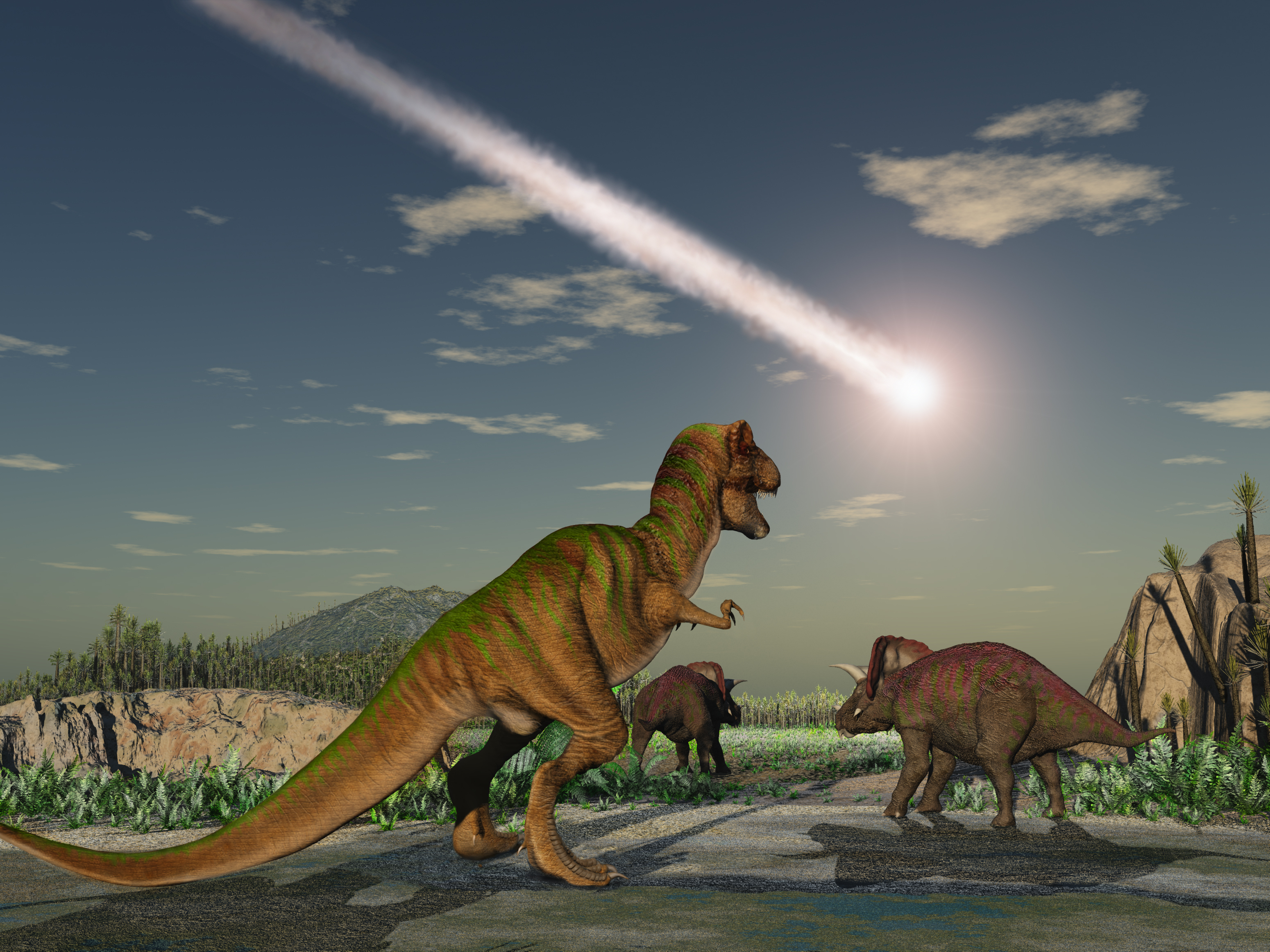A 10-km asteroid crashed into Earth near the site of the small town of Chicxulub in Mexico at the end of the Cretaceous period, about 66 million years ago. The impact unleashed an incredible amount of climate-changing gases into the atmosphere, triggering a chain of events that led to the extinction of non-avian dinosaurs and 75% of life on the planet. According to new research, this was likely worsened by the fact that the Chicxulub asteroid struck at an angle of about 60 degrees — one of the deadliest possible angles.
The Chicxulub asteroid hit Earth at an angle of about 60 degrees, which is among the worst-case scenarios for the lethality of the impact by the production of climate-changing gases. Image credit: Chase Stone.
“For the dinosaurs, the worst-case scenario is exactly what happened,” said lead author Professor Gareth Collins, a researcher in the Department Earth Science and Engineering at Imperial College London.
“Our simulations provide compelling evidence that the asteroid struck at a steep angle, perhaps 60 degrees above the horizon, and approached its target from the north-east.”
“We know that this was among the worst-case scenarios for the lethality on impact, because it put more hazardous debris into the upper atmosphere and scattered it everywhere — the very thing that led to a nuclear winter.”
Professor Collins and colleagues examined the shape and subsurface structure of the crater using geophysical data to feed into the simulations that helped diagnose the impact angle and direction.
Their analysis was also informed by recent results from drilling into the 200-km-wide crater, which brought up rocks containing evidence of the extreme forces generated by the impact.
Pivotal to diagnosing the angle and direction of impact was the relationship between the center of the crater, the center of the peak ring and the center of dense uplifted mantle rocks, some 30 km beneath the crater. At Chicxulub, these centers are aligned in a southwest-northeast direction, with the crater center in between the peak-ring and mantle-uplift centers.
The team’s 3D simulations at an angle of 60 degrees reproduced these observations almost exactly. They reconstructed the crater formation in unprecedented detail and give us more clues as to how the largest craters on Earth are formed.
“Despite being buried beneath nearly one km of sedimentary rocks, it is remarkable that geophysical data reveals so much about the crater structure — enough to describe the direction and angle of the impact,” said co-author Dr. Auriol Rae, a researcher in the Department Earth Science and Engineering at Imperial College London and the Institute of Geology at the University of Freiburg.
“Large craters like Chicxulub are formed in a matter of minutes, and involve a spectacular rebound of rock beneath the crater,” said co-author Dr. Thomas Davison, from the Department Earth Science and Engineering at Imperial College London.
“Our findings could help advance our understanding of how this rebound can be used to diagnose details of the impacting asteroid.”
Source: sci.news









